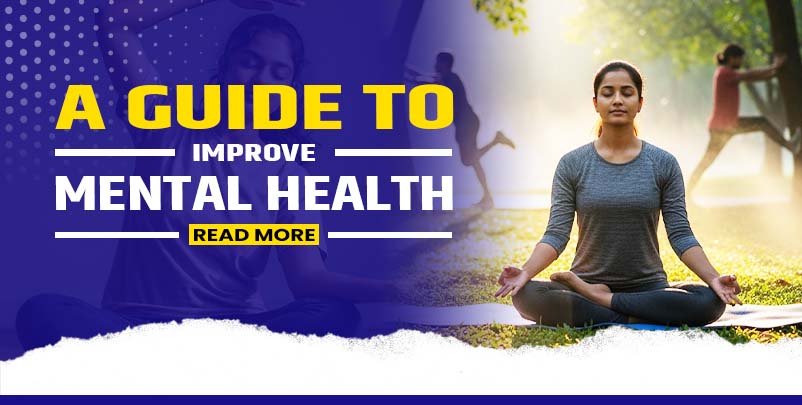The intricate connection between our physical body and our cognitive functions is a fascinating and increasingly understood aspect of overall well-being. Just as we nourish our bodies with wholesome food, engaging in regular physical activity is a vital form of nourishment for our minds. The benefits of movement extend far beyond maintaining a healthy physique; they deeply impact our brain health, influencing everything from our mood and cognitive abilities to our resilience against stress and age-related decline.
Embracing movement as a cornerstone of a healthy lifestyle is not just about physical fitness; it’s a powerful strategy for cultivating lasting mental wellness and unlocking the full potential of our minds. This guide will explore the profound ways in which incorporating regular physical activity can enhance your cognitive functions, elevate your mood, and contribute to a greater sense of overall well-being.
The journey towards optimal brain health and sustained mental wellness is a multifaceted one, and movement plays a pivotal role in supporting both. Our brains are dynamic organs that thrive on stimulation, and physical activity provides a unique form of this stimulation, triggering a cascade of beneficial physiological changes. From boosting blood flow and oxygen supply to the brain to promoting the growth of new brain cells and strengthening neural connections, the impact of exercise is far-reaching and deeply transformative.
By understanding these powerful mechanisms, we can begin to appreciate why incorporating regular movement into our lives is not merely a suggestion, but an essential ingredient for a healthy mind and a balanced emotional state. This guide aims to illuminate these connections and provide you with practical strategies to harness the power of movement for enhanced cognitive function and greater mental wellness in your daily life.
The Brain-Body Symphony: How Movement Enhances Cognitive Function
Our bodies and brains are engaged in a constant dialogue, and movement serves as a powerful conductor in this intricate symphony. When we engage in physical activity, our heart rate increases, leading to an enhanced flow of blood and oxygen to the brain.This increased circulation delivers essential nutrients and energy, which fuels brain cells and improves their function. Regular exercise has been consistently linked to improvements in various cognitive domains, including attention span, memory, learning abilities, and executive functions – the higher-level skills that allow us to plan, organize, and manage our time effectively.
Movement also plays a crucial role in neuroplasticity, which is the brain’s remarkable ability to reorganize itself by creating new neural connections throughout life. Physical activity stimulates the release of growth factors, such as brain-derived neurotrophic factor (BDNF), which supports the survival and growth of new neurons and strengthens the connections between them. This process is essential for learning new skills, retaining information, and adapting to new experiences. By making movement a regular part of our lives, we are actively nurturing our brain’s capacity for growth and cognitive resilience, contributing significantly to long-term brain health.
Mood Booster and Stress Buster: The Emotional Benefits of Exercise
Beyond its impact on cognitive function, movement is a potent ally in promoting emotional well-being and managing stress. Engaging in physical activity triggers the release of endorphins, natural mood elevators that can reduce feelings of pain and create a sense of euphoria. This “runner’s high” is just one example of the immediate mood-boosting effects of exercise. Regular movement can also help to regulate stress hormones, such as cortisol and adrenaline, leading to a greater sense of calm and reduced anxiety levels.
Moreover, physical activity provides a healthy outlet for pent-up emotions and can serve as a form of active meditation, allowing us to focus on the sensations of our body and temporarily detach from daily stressors and worries. Whether it’s a brisk walk in nature, a challenging workout at the gym, or a calming yoga session, finding a form of movement that you enjoy can be a powerful tool for enhancing your mood, reducing stress, and fostering greater mental wellness. Integrating regular physical activity into your routine can act as a buffer against the negative impacts of stress and contribute to a more positive and balanced emotional state.
Movement Across the Lifespan: Benefits for All Ages
The benefits of movement for brain health and mental wellness are not limited to a specific age group; they extend across the entire lifespan, offering unique advantages at every stage of life. For children and adolescents, physical activity is crucial for healthy brain development, improved concentration, and enhanced learning abilities. It also plays a vital role in promoting social skills, self-esteem, and emotional regulation.
In adulthood, regular movement continues to support cognitive function, helping to maintain sharp thinking, improve memory, and reduce the risk of age-related cognitive decline. It also serves as a powerful tool for managing stress, preventing burnout, and promoting overall psychological well-being. For older adults, staying physically active can help to preserve cognitive function, maintain independence, reduce the risk of falls, and enhance quality of life. Engaging in even moderate levels of physical activity can have significant benefits for maintaining both physical and cognitive health in later years.Regardless of your age or fitness level, adding movement to your daily routine is a valuable investment in your long-term brain health and lasting mental wellness.
Finding Your Rhythm: Types of Movement for Brain and Mind
The beauty of movement lies in its diversity. There is no one-size-fits-all approach, and the key is to find activities that you enjoy and can incorporate consistently into your lifestyle. A variety of exercises can benefit both your brain and your mind. Aerobic activities, such as brisk walking, running, swimming, and cycling, are particularly effective at boosting blood flow to the brain and stimulating the release of neurotrophic factors.
Mind-body practices, such as yoga, Tai Chi, and Pilates, combine physical movement with mindfulness and breathwork. These practices can help to reduce stress, improve focus, enhance body awareness, and promote a sense of calm and inner peace. Strength training exercises, while primarily focused on building muscle mass, also contribute to brain health by improving metabolic function and supporting overall physical well-being. Even simple activities like dancing, gardening, or taking the stairs instead of the elevator can accumulate significant benefits over time. The most important aspect is to find a rhythm of movement that resonates with you and makes you feel good, both physically and mentally.
Simple Steps, Significant Impact: Integrating Movement into Your Day
Incorporating more movement into your daily routine doesn’t require hours at the gym or intense training sessions. Small, consistent changes can make a significant difference to your brain health and mental wellness. Start by finding opportunities to be more active throughout your day. Take the stairs, walk or cycle for short errands, stand up and move around every 30 minutes if you have a sedentary job, or schedule short movement breaks into your workday.
Aim for at least 30 minutes of moderate aerobic activity on most days. If needed, you can split this into shorter sessions. The key is to find activities you genuinely enjoy and can easily fit into your schedule. As you move, try to be mindful by paying attention to your body’s sensations and your surroundings. Inviting friends or family to join you can make it more fun and keep you motivated. Remember, even small steps toward a more active life can lead to major improvements in your cognitive function, mood, and overall mental wellness.
Overcoming Obstacles: Making Movement a Sustainable Habit
While the benefits of movement are clear, making it a consistent habit can sometimes be challenging. Identify potential obstacles that might prevent you from being active, such as lack of time, motivation, or access to resources. Develop strategies to overcome these barriers. Schedule your workouts or movement breaks into your calendar as you would any other important appointment.
To maintain motivation and accountability, consider finding an exercise partner. Look for free or affordable physical activities in your community, such as local walking paths, public parks, or free online fitness videos.Begin at a comfortable pace and slowly increase the intensity and length of your workouts as your fitness improves. Be patient with your progress and remember to celebrate small victories. By making movement an enjoyable and regular part of your daily life, you can build a lasting habit that supports your long-term brain health and mental wellness.
A Movement for Well-being: Kokan NGO India’s Belief
At Kokan Kala Va Shikshan Vikas Sanstha, also known as Kokan NGO India, we believe in the holistic well-being of individuals and communities. While our primary focus lies in areas such as education and healthcare access in Maharashtra, we recognize the fundamental importance of both physical and mental health as integral components of a thriving life. We understand that a healthy mind, nurtured through practices like regular movement, is essential for individuals to reach their full potential and contribute meaningfully to society.
Our commitment to well-being extends beyond addressing immediate needs; we aim to empower individuals with the knowledge and resources to lead healthier and more fulfilling lives. We advocate for the integration of healthy habits, including regular physical activity, as a cornerstone of overall well-being. By promoting awareness about the powerful connection between movement, brain health, and mental wellness, we hope to encourage individuals across Maharashtra to embrace active lifestyles and experience the transformative benefits for themselves. We believe that by fostering a culture of well-being, we can contribute to stronger, more resilient communities where individuals are empowered to thrive.




